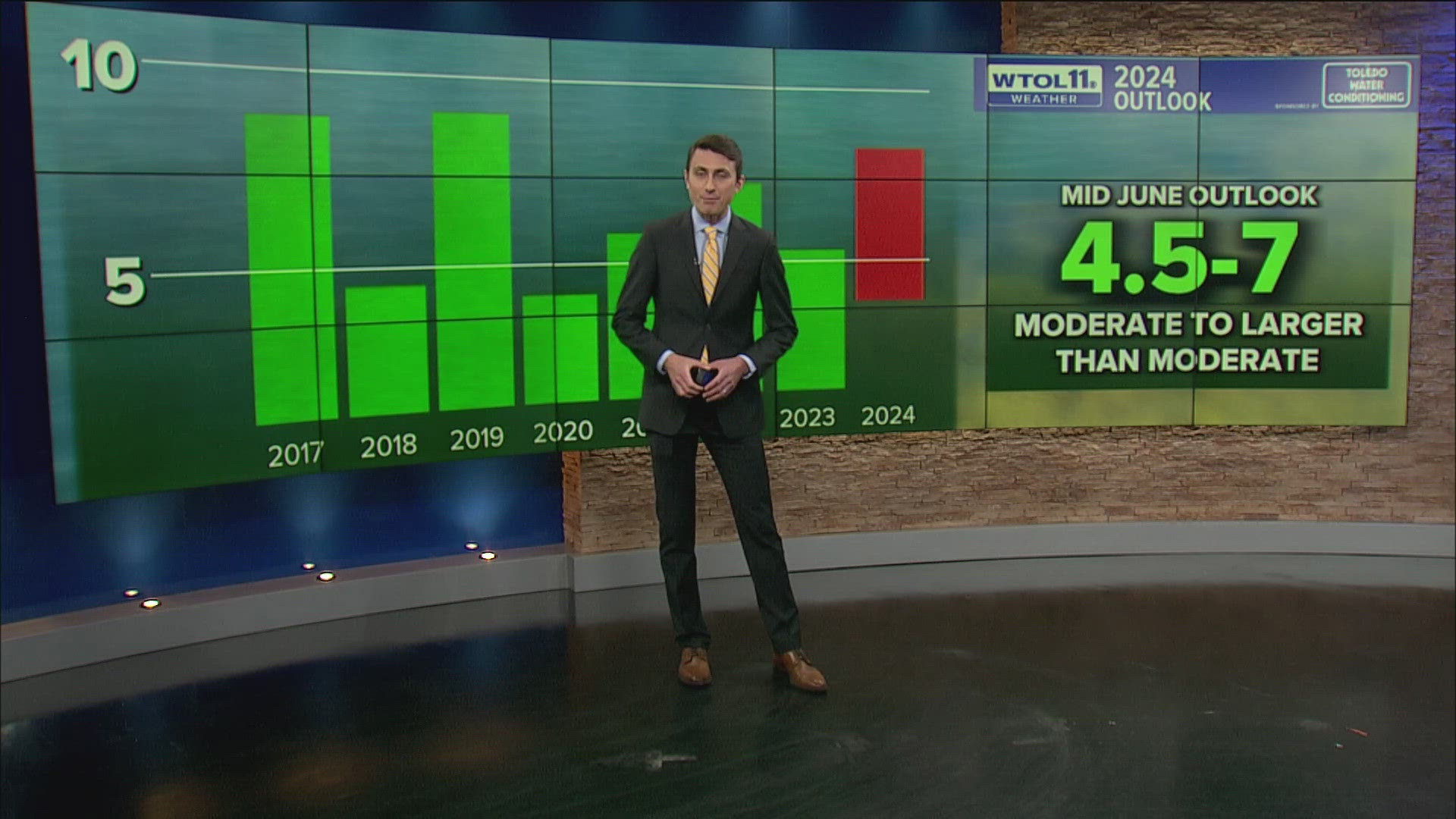TOLEDO, Ohio — With June almost halfway in the books, the summer harmful algal bloom is poised to impact Ohioans in the coming months. Impending heat and humidity may jump-start the algal bloom as Lake Erie water temperatures skyrocket.
In this week's edition of Climate Friday, Meteorologist John Burchfield explains how the upcoming heat wave may impact the harmful algal bloom.
In line with its original projections, NOAA still anticipates a moderate to larger than moderate harmful algal bloom on Lake Erie. Represented by a severity index ranging from 4.5-7, the evolution of this year's bloom will depend on summer weather conditions. A 10 indicates the worst-case scenario for Lake Erie algae whereas a 1 reflects a minuscule bloom.

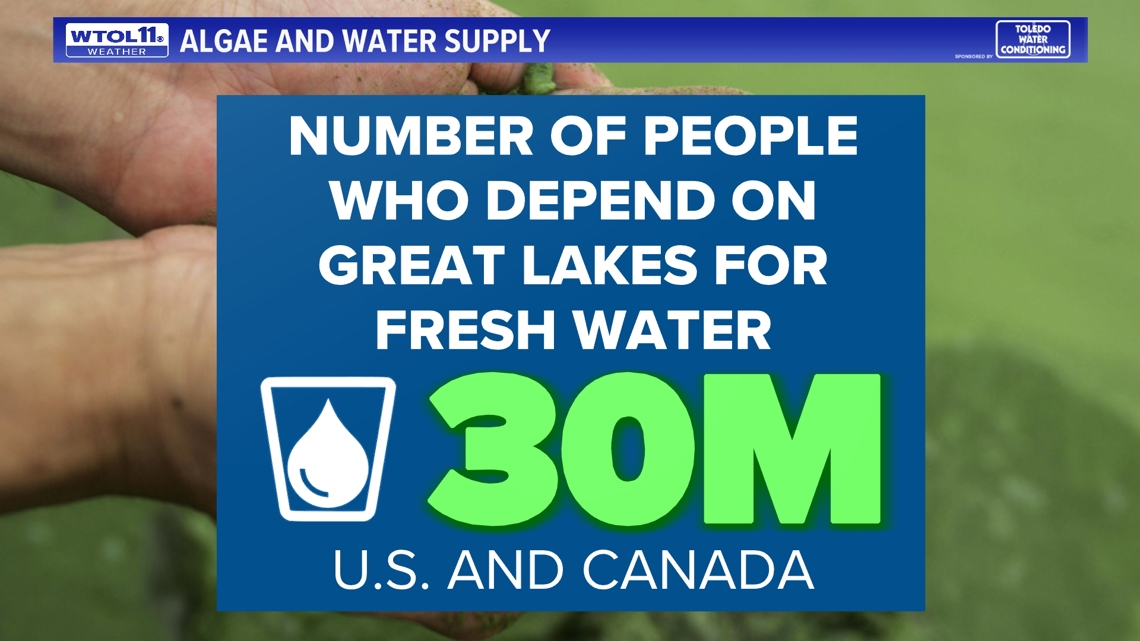
This year's bloom will likely fall somewhere in the middle to upper-end of that spectrum. NOAA will continue to release weekly updates each Thursday, and every week at 5:30 p.m. you can catch Meteorologist John Burchfield on-air with the latest outlook. The latest forecast update is attached at the top of this video, and an in-depth article examining the harmful algal blooms and the outlook is below:
The WTOL 11 weather team is forecasting a sustained heat wave through the middle to latter half of the month that will bring temperatures surging to the 90s across much of the Midwest. This heat will contribute to elevating Lake Erie water temperatures, possibly expediting the algal bloom. Blue-green algae thrive in warm, slow-moving water, feeding off nutrients like phosphorus and nitrogen.

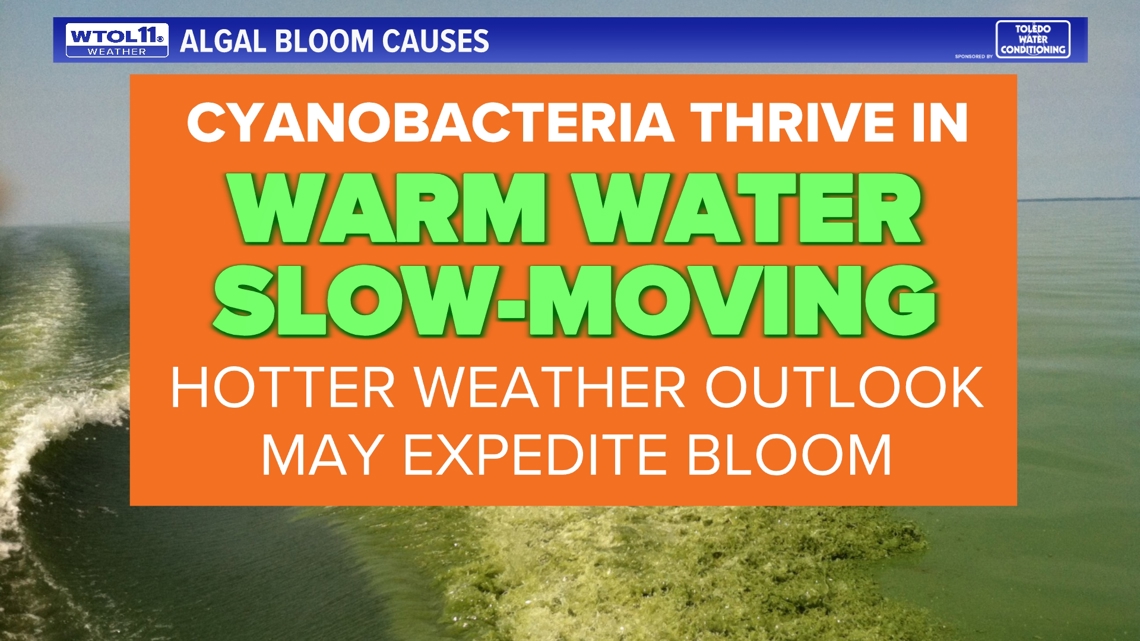
The western basin of Lake Erie provides an ideal habitat for the proliferation of algae. With water temperatures already around 70 degrees, Lake Erie will only get warmer as the summer progresses. Comparatively, temperatures on the portions of Lake Erie closer to Erie, Pennsylvania and Buffalo, New York are only in the low to mid-60s.
RELATED: Ohio farmers accept being part of the algal bloom problem, but intend on being part of the solution
Unlike the deeper northern and eastern portions of Lake Erie, the western basin stands out due to its extremely shallow depth and thus warmer temperatures. At its deepest, Lake Erie is 210 feet deep. Comparatively, the western basin is only 25 to 30 feet deep, the shallowest of the entire Great Lakes. This shallow water heats up rapidly during the summer months, fueling the spread of blue-green algae.

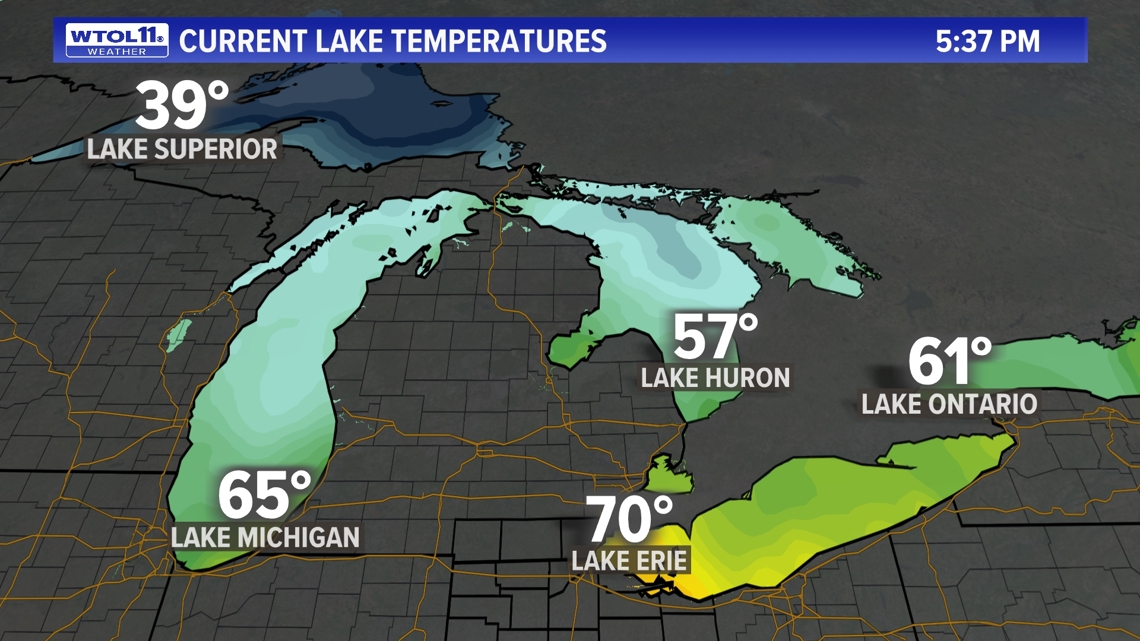
The upcoming heat wave will likely ramp up the heating of the lake, initiating the algal bloom. By August and September, lake water temperatures typically climb to the mid to upper-70s. So even with recent observations hovering around 70 degrees, Lake Erie still has a substantial margin to warm up before the peak algal bloom arrives later this summer.
How is climate change impacting the harmful algal bloom? Hotter temperatures contribute to warmer lake water, thus speeding up the bloom process. Precipitation has a mixed effect on summertime algae blooms. Increases in precipitation, especially localized downpours, increase runoff from farm fields into the Maumee River and thus Lake Erie. Climate change ramps up this mechanism, possibly increasing the amount of phosphorus and nitrogen in the water from runoff.

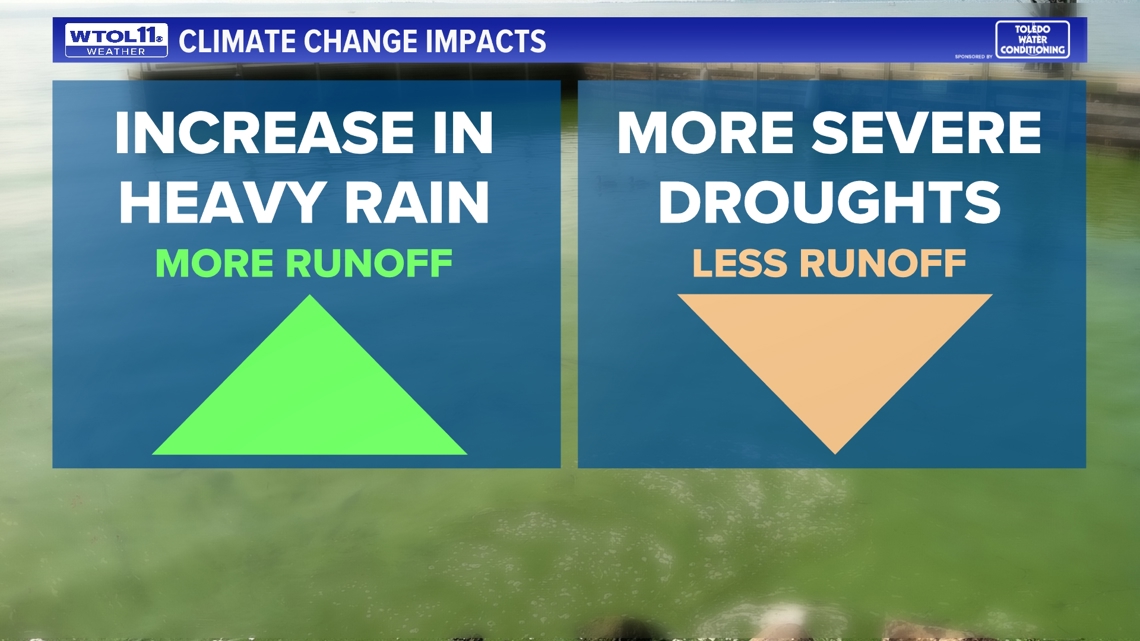
On the other hand, drought conditions can decrease runoff, lowering the amount of nutrients that spill into the rivers that feed into Lake Erie. Climate change is directly linked to more frequent and severe droughts, a mechanism that may decrease the intensity of algae blooms. So both heavy rainfall and lack thereof can play a role in the development of harmful algal blooms. Climate change may be having a mixed effect through both of these mechanisms, and more research is needed to fully understand the link.
As hot weather bears down on northwest Ohio and southeast Michigan, Lake Erie water temperatures will warm rapidly in late June. Stay tuned for weekly updates both here in the Climate Friday Newsletter and on-air as Meteorologist John Burchfield prepares you for the potential impacts of this year's harmful algal bloom!
WATCH PREVIOUS EPISODES OF CLIMATE FRIDAY

